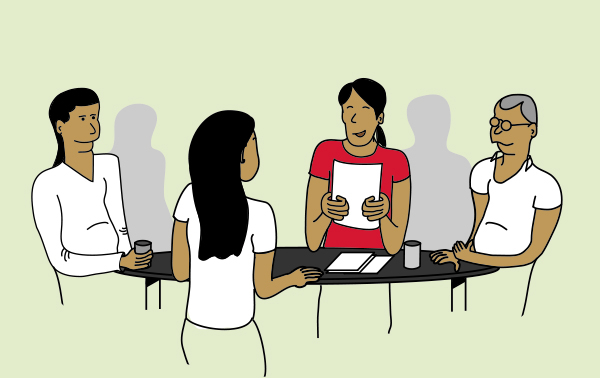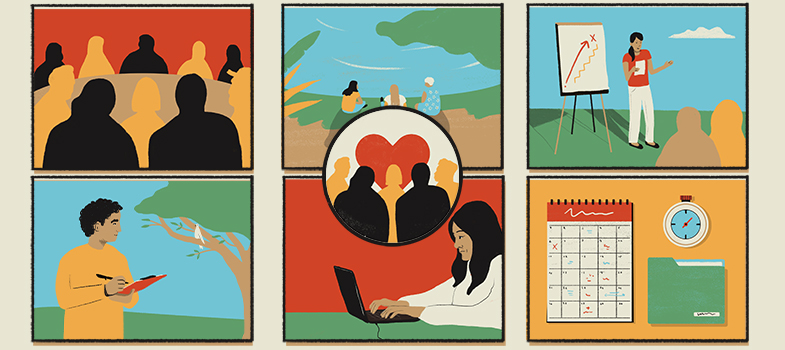Introduction to participatory techniques
3. Focus groups

What is it?
- A small group of people focusing on and discussing one specific topic.
When to use it?
- At the beginning of the process of community engagement: to gain background information and opinions on a particular issue.
- During the process of community engagement: to explore in depth issues that have been raised during the project.
- At the end of the process of community engagement: to evaluate the project.
Number of people
- 6 to 8 people, preferably homogeneous groups (e.g.: women in the same age group, men from the same social background).
Time
- 1 to 2.5 hours. After that, people can get tired and lose focus.
Benefits
- It is participatory and empowering.
- People can dynamically exchange and confront their ideas. New positions can come up.
- Shy people can feel more comfortable expressing their views in smaller groups, provided groups are as homogeneous as possible, depending on the local context.
Limitations
- Can be dominated by some people.
- Shy people might still be uncomfortable expressing their thoughts. Some people might not express their deep feelings even in a small group.
- Outcomes might not be applicable to the wider community.
- Focus groups can create an artificial environment that can influence responses.
- The outputs rely mainly on the skills of the facilitator to make people at ease and willing to express themselves.

